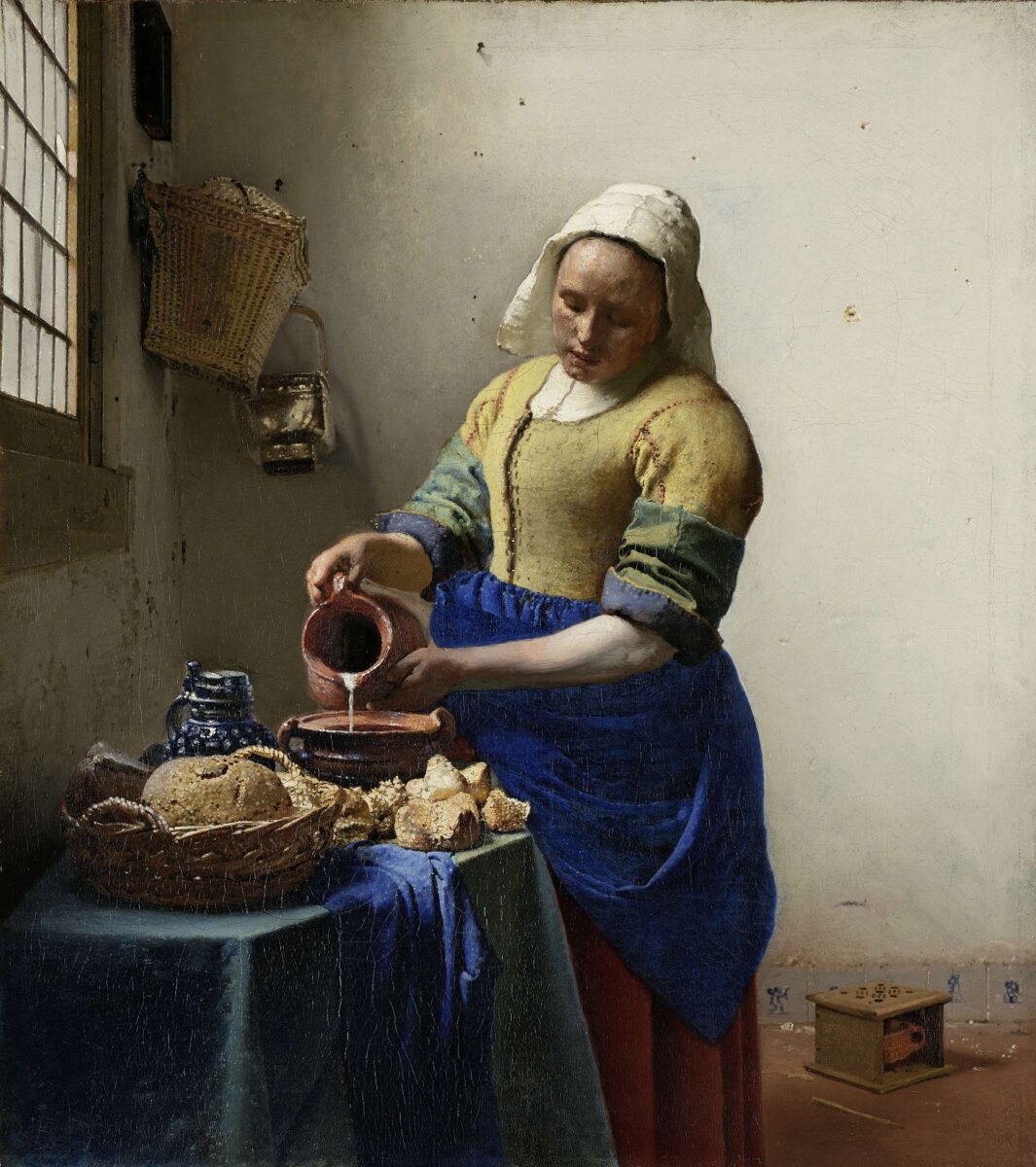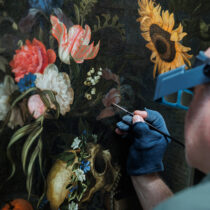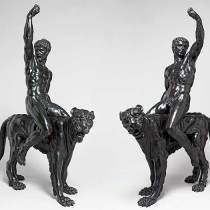At a press conference held earlier this month in front of Vermeer’s The Milkmaid (1657-58) at the Rijksmuseum in Amsterdam, General Director Taco Dibbits revealed some of the most important new discoveries on one of Vermeer’s most famous paintings since it was completed more than 350 years ago.
Recent research into the Vermeer painting The Milkmaid, conducted in the run-up to Rijksmuseum’s major Vermeer exhibition in 2023, has yielded several startling discoveries. Advanced research technologies have brought to light two objects on Vermeer’s world-famous canvas: a jug holder and a fire basket. The artist himself later painted over the objects. The most recent scans also uncovered what is clearly an underpainting. These discoveries offer revealing insights into Vermeer’s process and his search for capturing the tranquil atmosphere that characterises his work.
“So much work had already been done on the painting that we never anticipated something so definitive would surface thanks to modern technology. The exhibition in 2023 offers the Rijksmuseum the perfect opportunity to explore Vermeer with the latest technological advancement available to us, bringing viewers ever closer to this most mysterious and beloved artist of all time”. (Taco Dibbits, General Director of the Rijksmuseum)
With at least 27 out of the very small oeuvre of about 35 paintings by Vermeer, loaned from the most prestigious museums around the world, Rijksmuseum’s Vermeer exhibition will be the largest Vermeer exhibition ever. In an extraordinary gesture, the Frick Collection in New York will lend all three of its Vermeer paintings, shown together outside of New York for the first time since they were acquired more than a century ago. Additional highlights include The Girl with a Pearl Earring (Mauritshuis, The Hague), The Geographer (Städel Museum, Frankfurt am Main), Lady Writing a Letter with her Maid (The National Gallery of Ireland, Dublin) and Woman Holding a Balance (The National Gallery of Art, Washington DC).
New research into the milkmaid
In the run-up to the Vermeer exhibition, a team of conservators, restorers and scientists from the Rijksmuseum have been collaborating closely with colleagues from the Mauritshuis in The Hague to conduct research into Vermeer’s paintings, including The Milkmaid. The techniques used for this investigation include the advanced Macro-XRF and RIS scanning technologies that were recently part of Operation Night Watch, the major project devoted to the research and restoration of The Night Watch by Rembrandt.
‘New’ underpainting
These state-of-the-art technologies have revealed what is clearly an underpainting on The Milkmaid. This discovery sheds entirely new light on Vermeer’s methods. The general assumption was that the artist produced his small oeuvre very slowly, and always worked with extreme precision. This view is now being revised. A hastily applied thick line of black paint can be seen beneath the milkmaid’s left arm. This sketch shows clearly that Vermeer first quickly painted the scene in light and dark tones before developing the detail.
Jug holder
A similar preliminary sketch in black paint can be seen on the wall behind the young woman’s head. By comparing the results produced using the latest research techniques, it has now become clear that Vermeer used black paint to sketch a jug holder and several jugs, but didn’t develop them any further. The jug holder, a plank of wood with nobs attached, was used in 17th-century kitchens for hanging up multiple ceramic jugs by the handle. A pantry in Vermeer’s own home contained a similar item, and a miniature version of just such a jug holder can be found elsewhere in the Rijksmuseum, in Petronella Oortman’s dolls’ house (c. 1690).
The artist’s own fire basket
The recent research has yielded images in significantly higher detail than before. This has enabled scientists to identify the previously discovered basket, at the lower right of the painting, as a so-called ‘fire basket’. Woven from willow stems, or withies, this type of basket was a standard household item for young families. A fire bowl containing glowing coals was placed in the basket to keep new-borns warm and to dry nappies. Seventeenth-century archival material including Vermeer’s own estate inventory reveals that just such an item stood in his house, home to his family of numerous children. In the painting, Vermeer later covered over the fire basket with the foot stove, Delftware tiles, and the floor.





